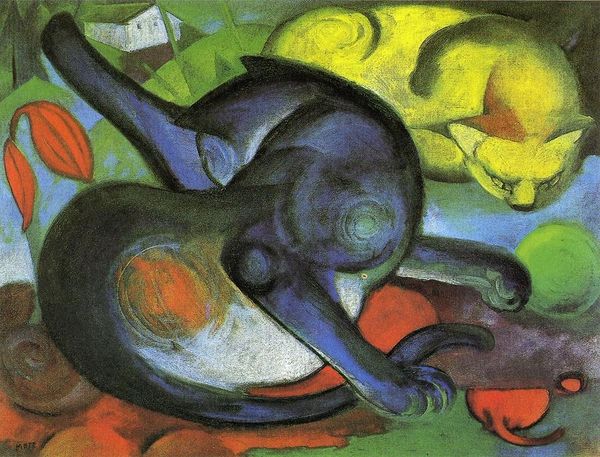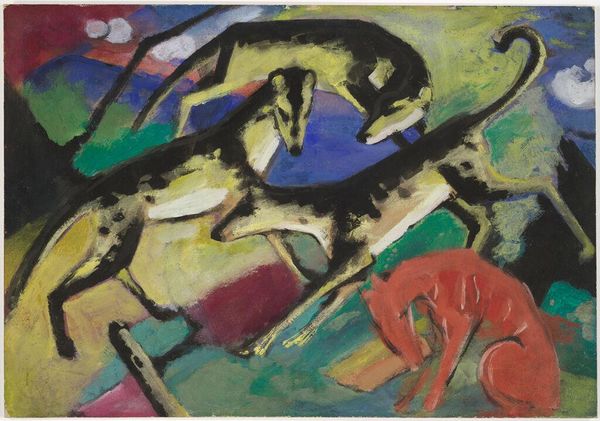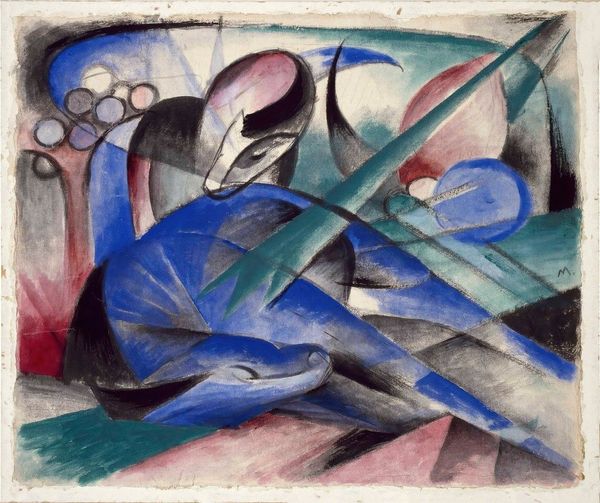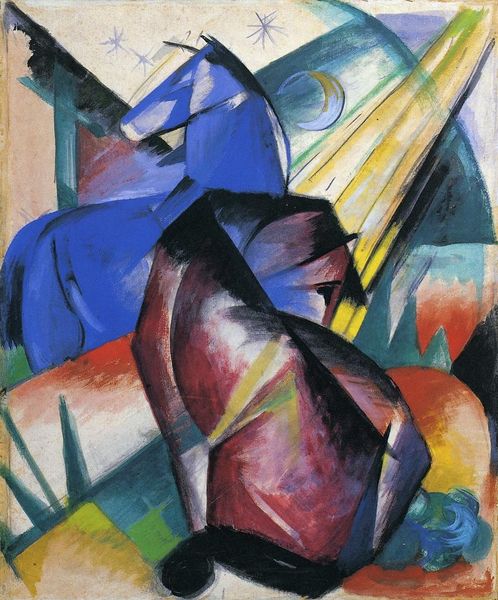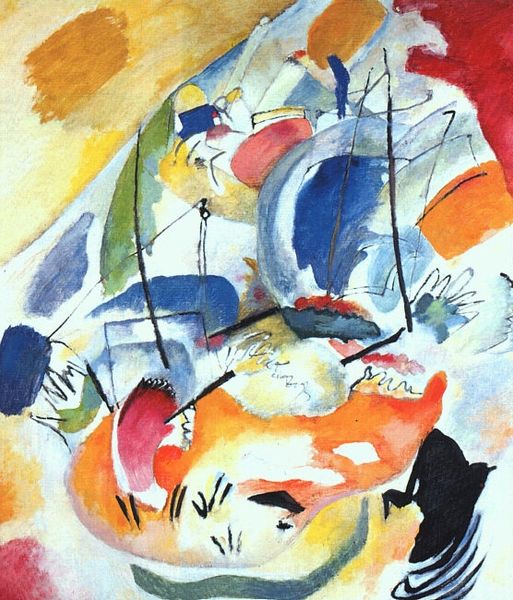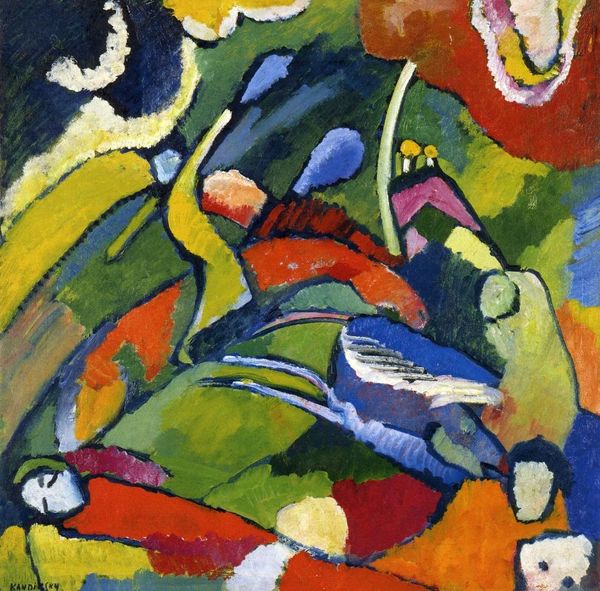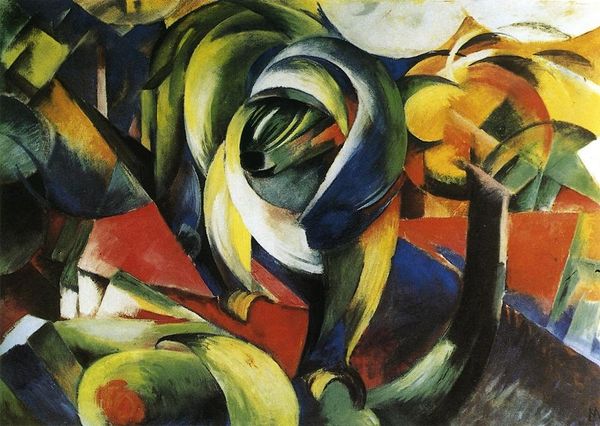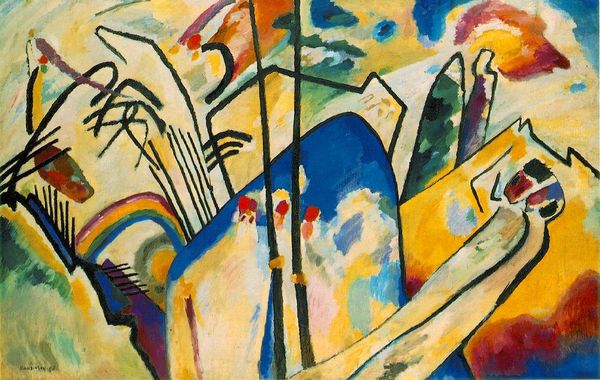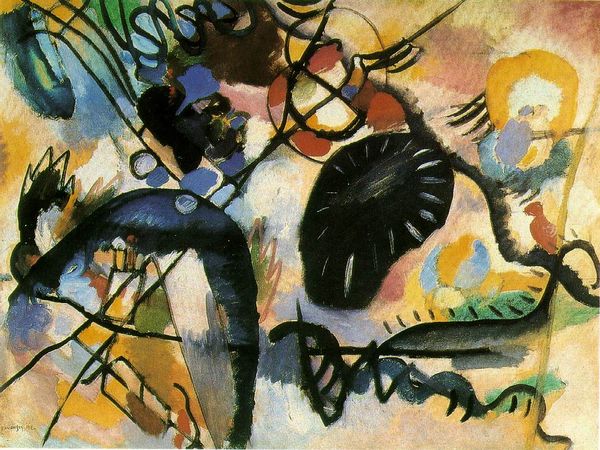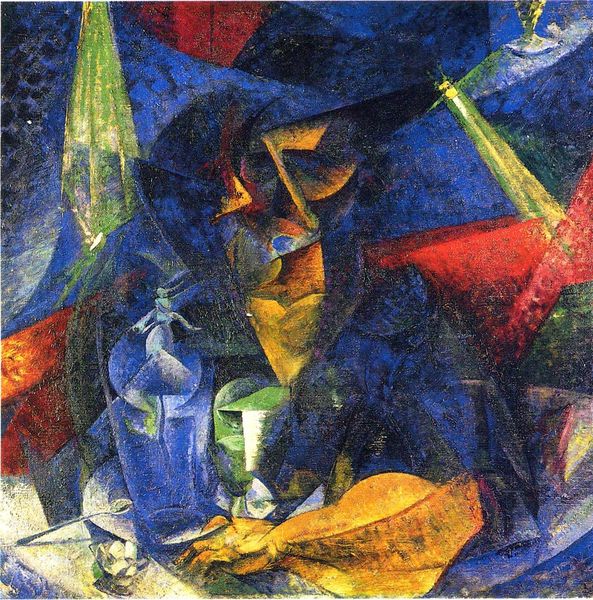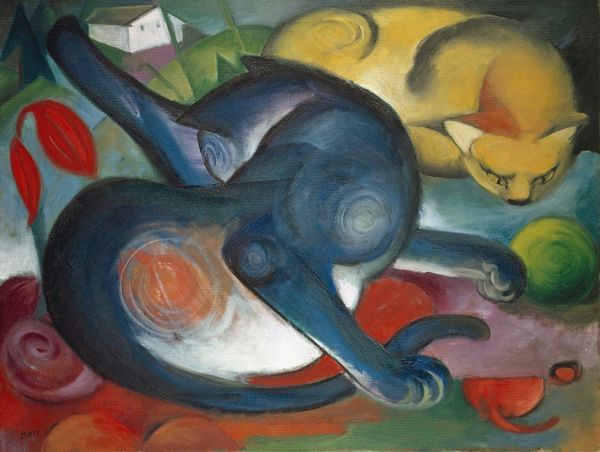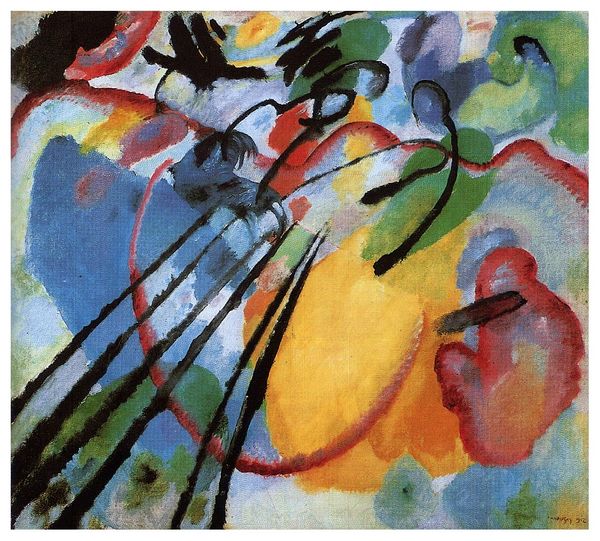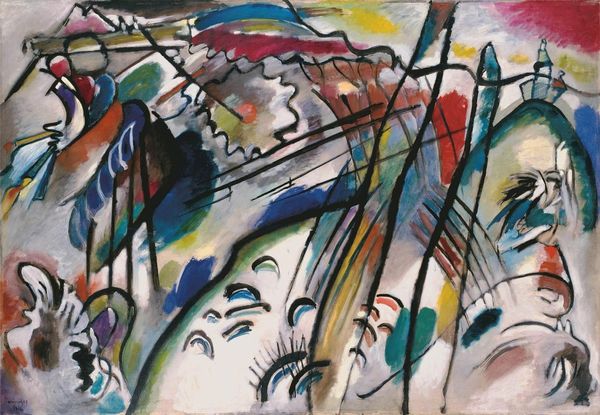
Dimensions: 37.78 x 44.77 cm
Copyright: Public domain
Editor: This is Franz Marc's "Sleeping Deer," created in 1913 using oil paints. The deer seems so peaceful, but the sharp angles and clashing colors surrounding it create such a vibrant, almost unsettling energy. How do you interpret this work? Curator: Structurally, Marc presents us with a fascinating juxtaposition. Notice how the curvilinear form of the deer is nestled within a fragmented landscape. These sharp, geometric forms – the triangles and quadrilaterals that constitute the background – disrupt any sense of traditional perspective. Do you observe how the color palette reinforces this tension? Editor: I do. The intense blues, reds, and yellows, while beautiful, don't exactly evoke a sense of calm. It's not a typical idyllic landscape. Curator: Precisely. Marc is less concerned with mimetic representation and more interested in conveying an internal, perhaps even spiritual, state. The fractured composition could be interpreted as a disruption of natural harmony, or even the animal's subconscious, visualized through abstracted forms. Consider the line; its varying weight delineates the shapes yet contributes to the fracturedness. Editor: So, by focusing on the formal elements—the shapes, colors, lines—we can understand the artist's intention, regardless of historical or cultural context? Curator: To a great extent, yes. The painting speaks through its own internal logic. The relationship between these elements—the interplay of shape and color, line and form—constructs its meaning. Editor: That's a completely different way of viewing art. It pushes you to really analyze what's in front of you. Curator: Indeed. Shifting our gaze towards the intrinsic qualities of the art object can reveal so much. I’m glad you’ve found value in seeing how Marc creates art.
Comments
No comments
Be the first to comment and join the conversation on the ultimate creative platform.
